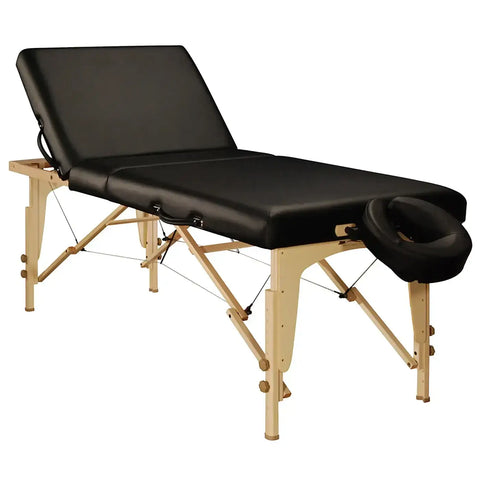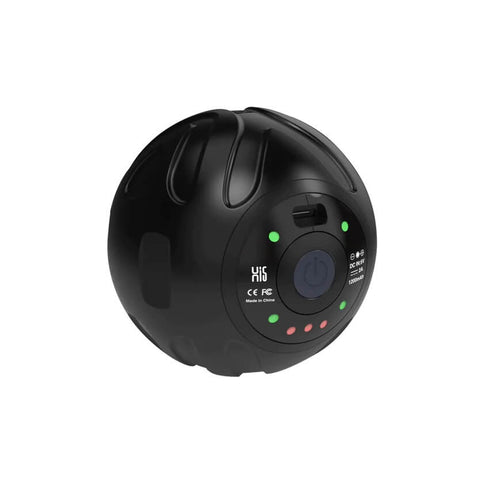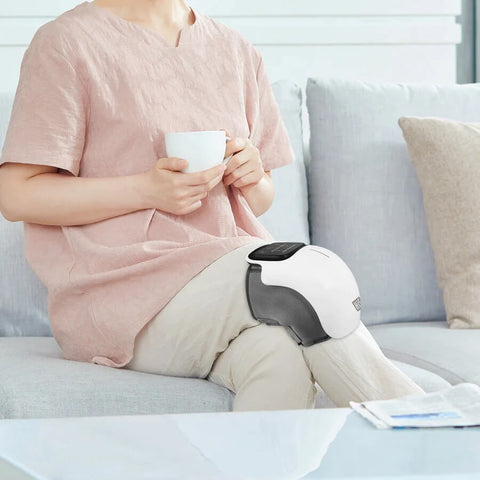
4 Life-Changing Benefits of Massage Therapy for Chronic Pain
Chronic pain can be debilitating. It can affect your ability to work, socialize, and even perform simple daily tasks. Inadvertently, it impacts your relationships and quality of life. While there are many treatments available, the multiple benefits of massage therapy for chronic pain management are widely recognized and utilized.
Massage therapy involves working the muscles and soft tissues of the body to boost relaxation and relieve tension. A regular massage can help alleviate discomfort, reduce pain and inflammation, improve circulation, and promote flexibility. Several types of massage therapy can be tailored to address specific pain points and areas of tension.
Research has shown that massage therapy can be particularly effective in treating back pain, one of the most common types of chronic pain. It can also help manage pain associated with fibromyalgia, arthritis, and migraines. Additionally, massage therapy can help to reduce stress and promote relaxation, which can, in turn, help to alleviate pain and improve overall well-being.
How Does Massage Therapy Help with Chronic Pain?
Massage therapy can be an effective way to manage and reduce chronic pain. It targets your body's muscles and soft tissues, helping reduce tension and improve blood flow and lymphatic drainage.
Loosens tight muscles.
When you experience chronic pain, your muscles can become tight and tense, exacerbating your pain. Massage therapy can help loosen these muscles, reducing tension and helping to alleviate your pain. Additionally, it can help reduce inflammation, significantly contributing to chronic pain.
Reduces stress levels.

One of the primary ways that massage therapy can help with chronic pain is by reducing stress levels. When stressed, your body releases cortisol, increasing inflammation and pain levels.
Massage therapy can help to reduce cortisol levels in your body, which can help to reduce your pain levels.
Improves range of motion.
A simple movement can be painful if you have chronic pain. Massage therapy can help improve your range of motion, which can be particularly beneficial if you are experiencing pain in your back or joints. By targeting trigger points and soft tissues, massage therapy can help to improve your flexibility and range of motion, reducing your pain levels and improving your quality of life.
Whether you are experiencing chronic pain due to fibromyalgia, arthritis, or another condition, massage therapy can effectively manage your pain and improve your overall health and well-being.
If you want to explore massage therapy as a pain management option, speak with a qualified massage therapist to learn more about how it can benefit you.
Acute Pain vs. Chronic Pain

Acute pain and chronic pain are two types of pain that differ in their duration, causes, and symptoms.
Acute pain is a type of pain that is typically sudden and short-lived, usually lasting for a few days or weeks. It is generally caused by an injury, surgery, or a medical condition and is a normal body response to tissue damage. Acute pain often resolves on its own or with treatment and is usually accompanied by physical symptoms such as swelling, redness, and tenderness.
Chronic pain, on the other hand, is a type of pain that lasts for an extended period, typically longer than three months. It can be caused by an injury, a medical condition such as arthritis or fibromyalgia, or nerve damage. Chronic pain can accompany physical symptoms such as fatigue, sleep disturbances, and decreased appetite. It can also significantly impact a person's emotional and mental well-being.
One key difference between acute and chronic pain is that acute pain serves a protective function, warning the body of potential damage or injury. Chronic pain, on the other hand, is a maladaptive response that persists even after the underlying cause has been treated or resolved.
While acute pain is a normal part of the body's response to injury or illness, chronic pain can be a draining condition that requires ongoing management and treatment.
4 Benefits of Massage Therapy for Chronic Pain
Massage therapy can provide many benefits, including improved circulation and blood flow, reduced inflammation and pain, relaxation and stress reduction, and improved range of motion and flexibility.
1. Improved Circulation and Blood Flow

Massage therapy can help improve circulation and blood flow, reducing pain and inflammation. This enhances the delivery of nutrients and oxygen to the soft tissues, tendons, and muscles. Improved circulation can also help to speed up the healing process and reduce recovery time after an injury.
2. Reduced Inflammation and Pain
Massage therapy can help to reduce inflammation and pain in the body by targeting trigger points and soft tissues. This can help relieve muscle tension and tightness, contributing to pain and discomfort. Massage therapy can also help reduce the production of stress hormones, aggravating pain and inflammation.
3. Relaxation and Stress Reduction
You get easily irritated and stressed out when you're in constant pain. As a result, you have a hard time resting and get woken up by aching sometimes. Massage therapy promotes relaxation and reduces stress levels in the body. It can encourage a sense of calm and well-being. Reduced stress levels can improve sleep quality, helping those suffering from chronic pain.
4. Improved Range of Motion and Flexibility
Massage therapy can help to improve the range of motion and flexibility in the body by reducing tension and stiffness in the muscles and joints, reducing the risk of injury. Massage therapy can also help to promote lymphatic drainage, which can help to reduce swelling and improve circulation.
Massage Therapy Techniques for Chronic Pain
If you are suffering from chronic pain, massage therapy can be a great way to manage and relieve your symptoms. Here are some massage therapy techniques that can help you:
Trigger Point Therapy

Trigger point therapy is a type of massage that targets specific areas of muscle tension, known as trigger points. These points can cause pain in other body areas, and trigger point therapy can help alleviate that pain by releasing tension. This technique involves applying pressure to the trigger points and holding it for a few seconds, then releasing and repeating as needed.
Deep Tissue Massage
Deep tissue massage is a technique that focuses on the deeper layers of muscle tissue. It can be beneficial for chronic pain, as it can help break up scar tissue and relieve muscle tension. This technique involves using slow, deep strokes and applying pressure to specific areas of tension.
Swedish Massage
Swedish massage is a widespread technique involving long, flowing strokes to help promote relaxation and relieve muscle tension. In addition, it can benefit chronic pain, as it can help increase blood flow and reduce inflammation. This technique can be customized to your specific needs and preferences.
Shiatsu Massage
Shiatsu massage is a type of massage that originated in Japan. It involves applying pressure to specific points on the body to help relieve tension and improve energy flow. This technique uses fingers, palms, elbows, and feet to target specific points, which is beneficial if you suffer from chronic pain.
Communicate with your massage therapist about your specific needs and any areas of pain or discomfort. With the correct technique and a skilled therapist, massage therapy can effectively manage your chronic pain.
Massage Therapy Equipment and Tools
When it comes to massage therapy, having the right equipment and tools can make all the difference in providing effective pain relief. Here are some of the most common massage therapy equipment and tools:
Massage Tables
Massage tables are an essential piece of equipment for massage therapists. They provide a secure and supportive surface for clients to lie on during a massage. In addition, the best massage table is comfortable for both the client and therapist, so massage therapy can be efficiently and effectively executed. Some features of a massage table include adjustable height, sturdy construction, and comfortable padding.
Massage Chairs
Massage chairs are a convenient and quick way to get massage treatment. High-end massage chairs have the latest technology for massage techniques, strokes, and speed. This is an excellent feature for people with chronic pain, as you can customize the massage therapy you need depending on your comfort level and pain points. In addition, some massage chairs have built-in features like vibrating or rolling massage balls, heat therapy, Bluetooth speaker, LED light, and a Zero Gravity Recliner.
Massage Guns
Massage guns are handheld devices that use percussive therapy to relieve muscle tension and pain. They deliver rapid, high-intensity pressure pulses to the affected area, which can help increase blood flow and reduce inflammation. Some massage guns also come with interchangeable heads, allowing you to target different body areas.
Massage Vibration Balls
Massage vibration balls are small, handheld devices that use vibration therapy to relieve muscle tension and pain. They deliver rapid, high-intensity vibrations to the affected area, which can help increase blood flow and loosen knotted muscles.
Heated Vibrating Knee Massager
A heated vibrating knee massager is an excellent tool for relieving knee pain and stiffness. It delivers gentle vibrations and heat to the affected area, reducing pain and promoting relaxation. Some heated vibrating knee massagers also come with adjustable straps, allowing you to customize the fit and level of pressure.
Who Can Benefit from Massage Therapy?

Chronic pain is not the only condition that can benefit from massage therapy. Here are some of the chronic conditions that massage therapy can help with:
- Stress and Anxiety: People suffering from stress and anxiety can benefit from massage therapy because it promotes relaxation and well-being.
- Depression: Massage therapy can help improve mood and reduce symptoms of depression by increasing the release of serotonin and dopamine.
- Surgery: Massage therapy can help reduce pain and swelling associated with surgery by promoting blood flow and lymphatic drainage. It’s best to consult with your doctor before getting massage therapy. If you have had recent surgery, you should avoid massage therapy until your incisions fully heal. Massaging the affected area can interfere with healing and cause pain or discomfort.
- Lymphatic Drainage: Massage therapy can help improve lymphatic drainage, cleanse your system from toxins, and improve immune system function.
- Sports Injuries: Massage therapy can help reduce pain, speed up muscle recovery, and promote healing in sports injuries by improving blood flow and reducing muscle tension.
- High Blood Pressure: Massage therapy can help reduce blood pressure by promoting relaxation and reducing stress.
- Pregnancy: Massage therapy can help reduce pain and discomfort associated with pregnancy by promoting relaxation, reducing muscle tension, and improving blood flow.

- Sciatica and Nerve Injury: Massage therapy can help reduce pain and improve function in conditions such as sciatica and nerve injury by improving blood flow and reducing muscle tension.
- Skin Conditions: Massage therapy can help improve skin conditions by improving blood flow and reducing stress.
- Hernia: Massage therapy can help reduce pain and discomfort associated with hernias by promoting relaxation and reducing muscle tension.
- Insomnia: Massage therapy has been shown to improve sleep quality and help those with insomnia. This is because it promotes relaxation and reduces tension in the body, making it easier to fall asleep and stay asleep.
- Digestive Issues: Massage therapy can help relieve digestive issues such as constipation, bloating, and irritable bowel syndrome (IBS). It can stimulate the digestive system and help promote food movement through the digestive tract.
- Headaches and Migraines: Massage therapy can reduce the frequency and severity of headaches and migraines. It relaxes the muscles in the head, neck, and shoulders, a common source of tension contributing to headaches.
Risks and Precautions of Massage Therapy
When to Avoid Massage Therapy
Massage therapy is generally safe for most people, but some situations may not be appropriate. You should avoid massage therapy if you have any of the following conditions:
- Infection or contagious illness
- Open wounds or burns
- Blood clots or bleeding disorders
- Deep vein thrombosis
- Fractures or severe osteoporosis
- Severe thrombocytopenia
- Severe varicose veins
- Recent surgery or chemotherapy
- Pregnancy complications
If you have any of these conditions, it's best to talk to your doctor before getting a massage.
Possible Side Effects and Risks

The risk of massage therapy appears to be low. However, there have been rare reports of severe side effects, such as blood clots, nerve injury, or bone fractures.
Some reported cases have involved active massages, such as deep tissue massage, or patients at increased risk of injury.
Choosing a qualified massage therapist with proper training and certification is essential.
Before the massage begins, you should discuss health conditions or concerns with your therapist.
If you experience any discomfort during the massage, inform your therapist immediately.
In some cases, massage therapy may not be the best treatment option for your condition, and your doctor and therapist may recommend other complementary health approaches.
Massage therapy is generally safe and effective for most people, but taking precautions and being aware of the possible risks is integral. Talk to your doctor or a qualified massage therapist if you have any concerns or questions about massage therapy.
Other Ways to Manage Chronic Pain

There are many ways to manage chronic pain, and massage therapy is just one of them. Here are some other ways to manage chronic pain:
- Cognitive Behavioral Therapy (CBT): CBT is a therapy that focuses on transforming negative thought patterns and behaviors. It can be helpful for people with chronic pain because it can help them manage their pain-related anxiety and depression.
- Acupuncture: Acupuncture is a conventional Chinese medicine approach that involves inserting thin needles into specific points on the body. It can help manage chronic pain, especially in the back, neck, and knee areas.
- Meditation: Meditation can be therapeutic for people with chronic. It can promote relaxation and help them manage their pain by teaching them to focus on the present instead of worrying about the future.
- Medications: Different medicines can be used to manage chronic pain, including nonsteroidal anti-inflammatory drugs (NSAIDs), opioids, and muscle relaxants. Working with a healthcare provider to find the proper medication and dosage for your needs is essential.
- Heat and Cold Therapy: Heat or cold on the impacted area can help ease pain and inflammation. Heating pads, warm baths, sauna baths, and ice packs are all effective ways to use heat and cold therapy for pain relief.
- Exercise: Exercise is an effective way to manage chronic pain because it releases endorphins, the body's natural painkillers. Low-impact exercises (yoga, walking, or swimming) can be helpful for people with chronic pain.
Can yoga, exercise, and physical therapy really help relieve chronic pain? Robert Saper, MD, MPH, answers this question in this video.
Consult your physician and develop a comprehensive plan for managing chronic pain tailored to your needs.
Conclusion
Massage therapy can be an effective way to manage your chronic pain symptoms. Massage therapy can help reduce inflammation and pain in the body by targeting trigger points and soft tissues. Massage therapy can also help promote relaxation and reduce stress levels, benefiting chronic pain patients. If you want to try massage therapy, consult your healthcare provider to decide if it's right. Then, invest in massage therapy tools to get the relief you need anytime.
Which of these massage therapy tools are you interested to buy? Let us know in the comments!
If you need help choosing what is best for you, don't hesitate to contact our customer service. We'll be more than happy to assist you.






Comments
Leave a comment